#tip:茶
Explore tagged Tumblr posts
Photo

✿ 中国茶の種類 ・茶葉の種類には、「緑茶」、「白茶」、「青茶」、「黄茶」、「花茶」、「紅茶」、「黒茶」とさまざまな種類に分けられます。この茶葉の分類は「茶葉の発酵具合」と「茶葉の製法」によるところが大きく影響します。 ・中国茶といえばウーロン茶を思い出しますが、意外なことに中国でもっとも飲まれているのは「緑茶」なのです。中でも緑茶に香りをつけた花茶が一番好まれています。中国茶は、同じ品種でも産地、味、香りによって、普段使いのものから超高級茶葉まで本当に様々に分けられています。
4 notes
·
View notes
Text
今日もジムで鍛えてきました~

筋肉おつかれ!
#フィットネスクラブ#ワークアウト#トレーニング#マシントレーニング#ダイエット#筋トレ#筋肉#鍛える#三茶#三軒茶屋#ジム内撮影禁止#ジム#tipness#ティップネス#風呂#光明石温泉#筋スタグラム#筋肉お疲れ
0 notes
Text
盛夏時節,這夏沁涼一下,感受日本夏季風物詩的夏日美饌:茶冰、甜點,好吃、好美、好拍、期間限定的「2024京王百貨・茶冰&夏日甜點節」!
#巡日#旅行#出國#優惠券#茶冰夏日甜點節#京王百貨店新宿店#東京#東京自由行#巡日指南#巡日旅行攝#Japan#Travel#Tea#Ice#Keio#Summer#Dessert#にほんこく#Guide#Tips#RoundtripJp
1 note
·
View note
Photo

(TIP&TIF 公式さんはTwitterを使っています: 「この後11:00~⏰ SKY STAGEでは...🎤 シャニムニ=パレードがパフォーマンス🌟 登場前の姿をパシャリ📸 チケットはコチラ👇 https://t.co/FulySbq93W オンライン配信(見逃し配信あり)はコチラ👇 https://t.co/O8u3yr07qi #シャニパレ #TIF2023 @ShanimuniParade https://t.co/SFNC9yuixq」 / Xから)
0 notes
Note
Hi! Do you have any thoughts on tea ceremonies in the Avatar universe or do you have any resources about tea ceremonies? It’s a massive rabbit hole and I can’t find a concise video on the social meanings (and admittedly long history) or an audiobook. (Is it silly that most of my info comes from anime and analysis of the Tale of Genji?)
Tea ceremony is definitely a field of study that is both expansive and deep. Unfortunately, it's not something I'm very knowledgeable about. I guess you could say it's not my cup of tea.
The best I can do is give you some general guidelines and details regarding tea ceremony:
Firstly, lets establish what tea ceremony is and isn't. We'll go with Wikipedia's definition: "Tea ceremony is a ritualized practice of making and serving tea (茶 cha) in East Asia practiced in the Sinosphere."
Other cultures (Mongolia, Tibet, etc.) also have very rich tea cultures as well, but it seems the emphasis in those cultures is on the context and ritual behind the serving of tea to someone, rather than the tea making process itself. I would distinguish these rituals as being more like tea rites. For the record, I just coined the term tea rite off the top of my head, and am making this distinction to narrow the research that needs to be done here. ^_^;;;
To clarify further, I would also say that wedding tea ceremony is really more an example of a tea rite than a tea ceremony, despite the name. Wedding tea ceremonies place emphasis on showing respect towards the parents, with tea-serving being the ritual that shows this appreciation. The focus is not so much on the brewing of the tea.
Tea ceremony traditions vary by nation and region. I would advise to pick a specific area's tea ceremony when integrating these practices into your story.
Chinese tea ceremony is known as gongfu cha (功夫茶) or "skillfully making tea". It's a sophisticated way of brewing and appreciating tea. This Wikipedia article details the steps of Chinese tea ceremony really well. It even details what materials should be used for all the tea accessories.
The Japanese tea ceremony Wikipedia article is also quite detailed. Compared to Chinese tea ceremony, Japanese tea ceremony seems to have a stronger religious/spiritual connotation, as it's very influenced by Zen Buddhism and Shintoism. There's more emphasis on what type of clothing should be worn and where the ceremony should be performed. Japanese tea ceremony is also unique for its use of "thick tea", powdered tea leaves brewed with a low ratio of water (matcha tea).
Last but not least, the Korean tea ceremony Wiki article. It doesn't seem to be as formal as Japanese tea ceremony, but it does seem to have a stronger religious connotation than Chinese gongfu cha, as many of the traditions developed in the Korean temples.
This video and its YouTube channel are great insights into the world of Chinese tea culture.
Also! Teapets are common in Chinese tea ceremony and they're really cute! You're supposed to pour tea over them for good luck ("feeding them") and they can be used to test the temperature of the tea.
As for how it could relate to ATLA, you could have the Earth Kingdom practice Chinese-style tea ceremony and the Fire Nation practice Japanese-style or Korean-style.
Air Nomads don't have tea ceremonies, per se, but Tibetan "tea rites" as I defined above.
The Water Tribe views tea more pragmatically, treating it as an herbal remedy.
So this is just my very surface-level, cursory knowledge of East Asian tea ceremony. I hope this post provides a bit more direction in your research journey. ^_^;
Like what I’m doing? Tips always appreciated, never expected. ^_^
https://ko-fi.com/atlaculture
174 notes
·
View notes
Quote
すこし前に筋トレYoutuberの嘘栄養学についての投稿がホッテントリに上がっていたが、女性向けのダイエット・筋トレ動画はそれに輪をかけてヒドい。ためしにYouTubeをシークレットモードにして「女性 ダイエット 筋トレ」で検索してみてくれ、3分間で浮き輪肉がごっそり取れるだの、2週間で二の腕痩せだの、やりたい放題。しかもそれらは数百万、場合によっちゃ数千万回も再生されてるんだぜ。ウォッ���してたら腹が立ってきたので俺が正解を書く。俺?ただの通りすがりの野良マッチョだ。命令口調でところどころ口うるさいかもしれんが、デタラメな事は言わないからまあ聞いてくれ。■継続続けることが最重要だ。最低でも3ヶ月、できれば半年取り組んでほしい。2ヶ月で10kg落としたいとか無謀なことは考えるな。それはボディビルダーのようなダイエットのプロがやる減量だ。あんたは月に2kg、攻めても3kgと考えてくれ。目先の数字に一喜一憂するな。体重なんて1kg〜2kgは簡単に増減する。ただし身体に関する情報を記録しろ。ノートを用意して体重・食事やトレーニング内容、思い当たることを書き記せ。身体の写真も月イチくらいで撮っとけ。足跡は後々あんたの財産になる。一度の食った、サボったは気にするな。女性の一時的な食欲増加は生理現象だ。というか週に一度はしっかり食え。あんたが頑張った一週間は一度の暴食よりはるかに尊い。一週間、一ヶ月間単位の総量で考えるんだ。2日止まっても3日目にまた走り出せば大したことはない。いいか、継続だ。■カロリー収支結局のところダイエットの本質はこれだ。消費カロリーが摂取カロリーを上回るように食事をコントロールすること、これがダイエット。〇〇食べて痩せ、白湯、一旦無視でいい。まずは自分の一日の総消費カロリー(基礎代謝+活動代謝)を計算する。年齢身長体重でだいたい分かるから検索しろ。これを基にして必要な栄養価の目安を算出する。P=タンパク質、F=脂質、C=炭水化物(糖質)の三大栄養素、これらをどのような内訳で摂取するか、これがPFCバランスだ。総摂取量を10として本稿ではP2:F2:C6を勧める。Fは意識していても摂り過ぎるからだ。Cは無理のない範囲で削ってok。1日の総消費カロリーから-300kcal〜-500kcalに設定できれば上出来だ。自炊ベースで食事管理するのが王道だが、忙しくて自炊なんて出来ない奴もいるよな。出来合いを食べるなら成分表に目を通せ。食べたもの、これから食べる食材の栄養価をチェックするなら江崎グリコの栄養成分ナビがオススメだ。何を食��てどれだけ摂取したか、数値で確認しろ。食事をカロリーベースで考える習慣がつくと、1日の中で上手に調整できるようになってくる。サプリ?要らない。食べ物の形をしたものを食べて消化器を動かせ。野菜もモリモリ食え。ただしプロテインパウダーは使い勝手がいいから常備しとけ。低カロリーで栄養効率がいいからな。栄養については書ききれないからググってくれ。そして大事なことが2点。・しっかり食べること。これは後述する。・脂肪が落ちるということは筋肉も落ちるということ。従ってあんたのダイエットの目標が「いい身体になること」であれば筋トレは必須となる。■筋トレ全身やれ。胸・肩・腕・背中・お腹・前腿・ハムストリングス・尻、ぎりぎり10回できる強度のトレーニングを3セット、これが原則だ。「5分で腹痩せ腹筋運動」じゃない。あれ系で腹が引き締まった気がするのは普段動かしていない筋肉が刺激され、腹筋の活動が活発になり、垂れ下がっていた内臓がリフトアップされるからだ。嘘ではないが本質的ではない。部分痩せ?無い。運動習慣のないあんたは全身の筋肉量が足りない。どの筋肉をどう収縮し、どう伸ばしたらどういう刺激があるのか、自分の身体を点検しろ。膝つき腕立て、パイクプレス、ベンチディップス、レッグレイズ、ブルガリアンスクワット、ヒップリフト、まずはこのあたりからだ。最初は自体重の種目でいい。ここで朗報だ。筋トレ初心者のあんたは腕立て伏せ10回も満足にできないだろう。3セットやると翌日には脇の下あたりが強烈な筋肉痛に見舞われるはずだ。これはあんたの筋肉が発達する福音だ。おめでとう!急な刺激を受けて肉体は突貫工事を始める。なにしろ身体にとって緊急事態だからな、アンダーカロリーだろうが疲れていようがお構い無しだ。あんたの身体は筋トレをやった直後から発達し始める。初心者に限っては「除脂肪と筋肥大」という相反する要素が両立する。我々はこれを初心者ボーナスと呼んでいる。1ヶ月も続ければ自重では不足に感じ始めるはずだ。特に背中は難しい。できればジムに行ってほしいのだが、様々な事情で通えない人もいるよな。自宅でトレーニングする場合はダンベルとベンチがあれば多くのことが出来る。ダンベルは20kgまで可変可能なアジャスタブルタイプのものが望ましい。もし男性なら30kgは欲しい。そんな重量は自分には不要と思うかもしれないが、なあに1年後には物足りなくなるさ。そのくらい初心者の発達は目覚ましい。あんたには伸び代しかない。■具体的tipsとはいえ何から始めればいいか分からないよな。そこで手軽に取り組める具体案をいくつか挙げるから今日から取り組んでくれ。・飲み物でカロリーを摂らないジュースをお茶に、ビールなら糖質offのものにしろ。100ccにつき40kcalのジュースならペットボトル一本で200kcal減だ。簡単だろ?・よく咀嚼すること見落としがちだがマジで重要だ。普段の2〜3倍噛むよう心がけてくれ。噛むことでインスリンの分泌が促され満腹中枢が刺激される。なるべく生野菜やカロリーの低いものから食べ始めること。噛むことで顔の筋肉が使われて小顔効果もある。・しっかり食べること一見するとカロリー制限と真逆のことのように感じるかもしれないが、ジュース一本とバナナ二本を考えてくれ。どちらが腹持ちがいいかは言うまでもないだろ?女性にありがちなのが普段から少食なのに痩せないパターン。これは最悪だ。身体には恒常性といって生体の状態を一定に保とうとする機能がある。海藻サラダにパンひと切れでも痩せないのは、あんたの身体が省エネモードになっているからだ。要するに代謝が落ちている。まずはバナナ一本でいいから朝飯を食べろ。「私はこれから食べて運動して燃やして生きていきます」と身体に宣言するんだ。それで1kg増えたってどうってことはない。あんたが最終的に得られるリターンははるかに大きいのだから。・歩けひと駅余分に歩け。階段を使え。徒歩は最強の有酸素運動だ。歩くことで全身に血が巡り代謝が上がる。HIIT?ラン?必要ない。毎日歩け。良いことしかない。水分は摂れよ。適当な事ばかり言ってるYouTuberをこき下ろすはずが、書いてみたら地味で真っ当な事ばかりだった。俺は別に「YouTubeで一緒にやろう系」を悪いとは思っちゃいない。ああいうものをきっかけに運動習慣がつくならそれは良い事だ。ただ一撃必殺!脂肪撃退!なんてものはなく、変化は日々の継続の先にしかない。画面の向こうの教える側はもれなく泥臭い努力をしてきた事はどうか理解してほしい。あいつらは時にそれを言わないから。この投稿が何かしらのきっかけになれば幸いである。ナイスマッスル!
女性向けダイエットの情弱ビジネスがヒドすぎるから正解書く
100 notes
·
View notes
Text
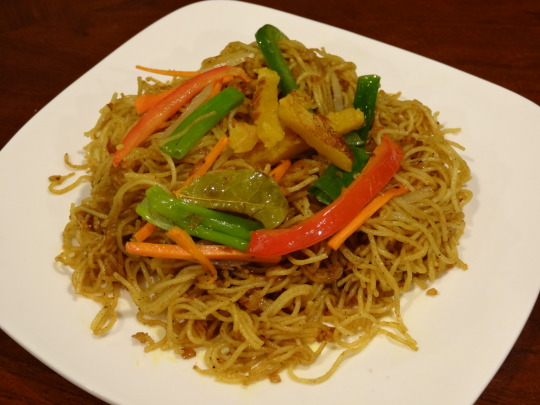
星洲炒米粉 / Xing zhou chao mei fun (Singapore noodles)
This dish fries steamed noodles and assorted vegetables in a mildly spicy curry paste, made from a bespoke curry powder and a blend of fresh aromatics. The result is a crispy, chewy, complex, warming stir-fry with notes of turmeric, liquorice root, and cinnamon.
Though this dish is referred to as "Singapore noodles," vermicelli dishes common in Singapore do not include curry powder! These "Singapore" noodles in fact originated in Hong Kong 茶餐廳 (cha chaan teng; Western-influenced cafés), and gained popularity between the 1940s and 60s. They combine British influence (in the form of curry powder) with the rice noodles common in Chinese, Malay, and Indian cooking; the reference to Singapore is perhaps a nod to the cosmopolitan, "exotic" atmosphere of these cafés.
This is a vegan version of a dish that often also includes shrimp, char siu, or chicken. Instructions for a vegan version of the typical sliced fried egg topping are included.
Recipe under the cut!
Patreon | Tip jar
Serves 3-4.
Ingredients:
For the dish:
200g vermicelli rice noodles (bee hoon / mi fen; 米粉)
4 green onions, greens and whites separated
1/2 medium yellow onion, thinly sliced
1 medium (50g) julienned red mild chili (such as aji dulce), or 1/4 medium red bell pepper
1 medium (50g) julienned green mild chili, or 1/4 medium green bell pepper
1 bunch yellow chives
Small handful bean sprouts
3-inch piece (40g) carrot, julienned
1 tsp table salt, or to taste
Large pinch MSG (optional)
Rice vermicelli (also known as bee hoon / bihun, mee hoon / mihun, or mi fen) are long, fine rice noodles. They should not be confused with semolina vermicelli. They may be purchased at an east or southeast Asian grocery store; Chinese, Vietnamese, or Thai rice vermicelli will all work. I used Hai Ca Vang rice vermicelli, which I like in this dish for how well they stand up to stir-frying, and the chewy bite they give to the final dish.
Yellow chives are simply chives that have less color because they are grown out of the sun. They may be found in a Chinese grocery store; if you can't get your hands on any, omit them or substitute more bean sprouts.
For the curry paste:
4 tsp curry powder Singapura, or to taste
3 cloves garlic
4 Thai shallots, or 1 Western shallot
1-inch chunk (10g) ginger
1/4 medium yellow onion
White of 1 stalk lemongrass (optional)
1 bay leaf (optional)
Some versions of Singapore noodles are flavored entirely with curry powder, or (if a spicier curry powder is being used) with a mix of curry powder and turmeric; home cooks tend to include less curry powder or paste than restaurants do. You could decrease the amount of curry powder down to about a teaspoon for a home cook version of this dish. If you aren't making your own, Singapore curry powder (咖哩粉) can be purchased online from specialty spice retailers, or from a Hong Kongese brand such as Koon Yick Wah Kee; you could also substitute another mild, sweet curry powder, such as Japanese curry powder (S&B is a popular brand).
You could skip prepping the aromatics as well by purchasing a jar of ready-made Chinese curry paste (咖哩醬) from a brand such as Koon Yick Wah Kee (whose blend consists of curry powder hydrated with white vinegar and soybean oil); Malaysian curry paste would be a good substitute. Some recipes make a quick homemade curry paste by combining curry powder with salt (1 tsp), sugar (1 tsp), oyster sauce (1 Tbsp), water (2 Tbsp), and sometimes chili sauce, and add this sauce to the noodles as they are fried. I prefer versions of the dish that add fresh aromatics, though—I think they round out the curry powder by providing a flavorful base for it. You can experiment until you get the flavor and texture you prefer.
For the egg:
1/4 cup (60mL) coconut milk, or water
1/2 tsp ground turmeric
1/4 - 1/3 tsp kala namak (black salt)
1/4 tsp ground white pepper (optional)
1/2 tsp Liaojiu (Chinese cooking wine)
Liaojiu will likely be labelled "Shaoxing wine" in English. For an alcohol-free version, use ume plum vinegar or apple cider vinegar. The wine is used to flavor and cut the 'egginess' of the eggs.
This recipe usually calls for eggs, liaojiu, and salt. The turmeric and white pepper add flavor and color; the kala namak provides an eggy taste.
Instructions:
1. Prepare the aromatics. Peel and chop the garlic; mince the onion and shallots; scrub and mince the ginger (there's no need to peel it). Divide the whites of the green onions from the greens, and mince the whites.
Pull away any tough outer leaves of lemongrass. Separate the yellow / white section from the green, and cut off the root end. Reserve the green to flavor soup stocks. Thinly slice the white of the lemongrass widthwise, then pass the knife through for another few minutes to mince very thoroughly.
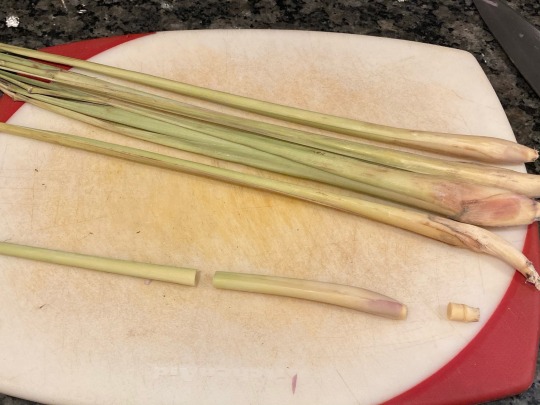
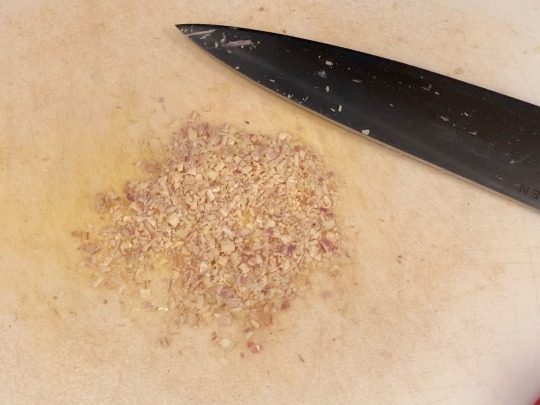
For a "saucier" noodle dish, pulverize the aromatics in a mortar and pestle or a blender rather than mincing them.
2. Prepare the vegetables. Cut peppers into a thin julienne; julienne the carrots; thinly slice the onion. Cut the greens of green onions, bean sprouts, and chives into 1 1/2 or 2” pieces.
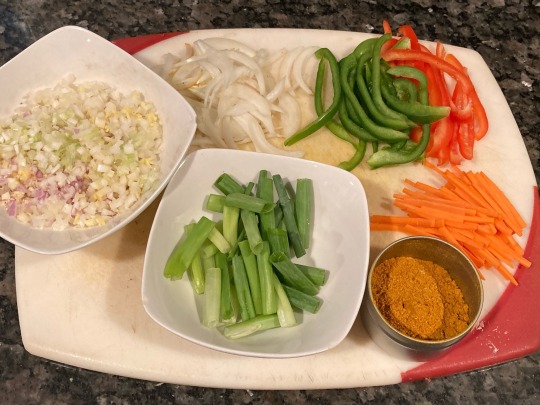
3. Cook the noodles. Soak noodles in just-boiled water for about 90 seconds, or until they break when pinched firmly. Depending on the thickness of your noodles, they may need as much as 2-3 minutes.
Drain the noodles, but don’t rinse them. Spread them out on a baking sheet and cover to allow to steam for 10 minutes. With oiled hands, gently pull apart and untangle the noodles. Cut them in a few places with kitchen scissors to make stir-frying easier.
4. Cook the egg garnish. Whisk all ingredients for the egg together in a small bowl. Heat a wok over medium heat for several minutes, then add in a couple teaspoons of oil and swirl to coat the surface of the wok. Pour ‘egg’ into the bottom of the wok, then lower heat to low and allow to cook until darkened and solidified on top. Flip and cook the other side on medium-high until browned in places. Remove from wok and thinly slice.
5. Cook the vegetables. Heat wok on high for several minutes. Add in a couple teaspoons of oil and swirl to coat. Fry sliced onions, agitating often, for about 30 seconds; add carrots and fry another 30 seconds. Add peppers and cook for another 20-30 seconds. Remove from wok.
Cook chives or bean sprouts for 30 seconds to a minute, until slightly wilted, and remove.
6. Make the curry paste. Add another couple teaspoons of oil to the wok. Fry the aromatics (whether minced or pulverized) and bay leaf, stirring often, until fragrant, about 2 minutes. Lower heat to low, then add the curry powder and stir. Immediately add another couple teaspoons of oil, or enough to create a bit of sauce (the amount will vary based on how much curry powder you've added).
If you're using pre-made curry paste, just fry it for 30 seconds or a minute until fragrant. If you're using a mix of vegetarian oyster sauce, water, salt, and sugar, skip this step.
7. Fry the noodles. Raise the heat to medium-high. Add the noodles and stir to coat evenly. Allow noodles to sit for a minute or two, then flip with chopsticks or tongs and allow to fry again. This will help the noodles to fry and brown.
Do this a few times until noodles are evenly toasted, 4-5 minutes. Add salt and MSG (or oyster sauce mixture) and stir to coat. Add in vegetables, egg, and green onions and cook for another minute until green onions are wilted.
65 notes
·
View notes
Note
can you do Bleach Name game for ichigo's friends in Karakura Town?
Ya know it's weird that i haven't done it already... I kinda thought I had, honestly. Yeah, let me resurrect this long dead series of posts...
Inoue Orihime[井上 織姫] read most literally as something like "Well+Top"(as in the top of a well(for water)) and "Weaving+Princess" but of course the name Orihime is just taken directly from the mythological figure behind the tanabata festival. It's possible the name Inoue in that context could be used to reference the Well Mansion, one of 28 categories of constellations in Chinese astronomy. Although in Tanabata Orihime refers to the star Vega, which as far as I can tell is not part of the Well Mansion.
In any case, the myth of Orihime and Hikoboshi was the basis of Kubo's original Bleach one-shot, which itself got reworked into the plot with her brother Sora, the hollow Acidwire. Ichigo lost prettymuch all of his associated hikoboshi themes in the transition from the one-shot to the serial title, so her name is kind of vestigial. The one lingering detail that was never built on was how her rejection powers were said to verge on the territory of god, and in the tanabata myth Orihime is the daughter of Tantei[天帝]:"Heaven Emperor" one of several epithets for the Jade Emperor, a figure hailed as a human ascended to immortal, the First God, and a supreme ruler over other gods. But despite that very slight thematic alignment, she was never given any divine origins.

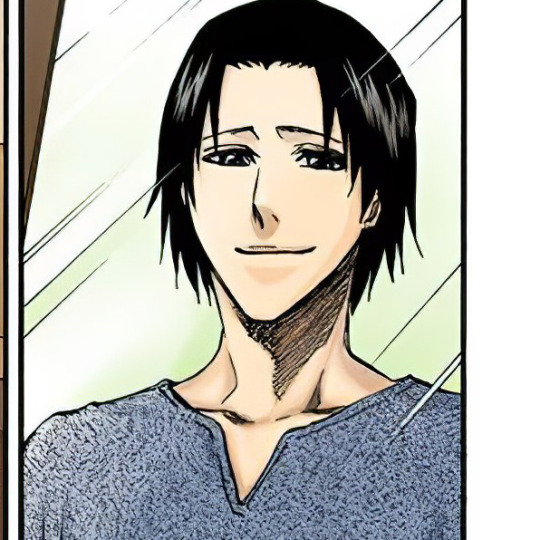
Her bother, Inoue Sora[井上昊] reads, "Well+Top" and "Sky/Heaven," where Sora[昊] is a synonym with Ten/Ama[天]: "Sky/heaven" and both a synonym and homonym with sora[空]: "sky/heaven/void." (And it's a bit of a tangent, but that last one is the same word Kubo uses in the name Kuukaku[空鶴], Karakura town[空��町], and when Aizen says, Ten no za no kuuhaku[天の座の空白]: "The Throne of Heaven is Empty.") He was a rewritten from what was originally Orihime's late grandfather in the one-shot, which aligned more obviously with the father Heaven King role of myth.
Sado Yasutora[茶渡 泰虎] I think I've mentioned before, reads "Tea+Ferry" and "Peaceful+Tiger" which just seems to literally describe him as an immigrant(traded over on a boat, like tea) and as a gentlegiant type. It's also very possible Kubo just wanted to nickname him "Chad" and found a name he could squeeze into that, rather than worry about the meaning of the name first.



Arisawa Tatsuki[有沢 竜貴] I don't really know how to parse part of her surname here, "Posession/Existence+Swamp" seems to be the literal breakdown? It's also just an actual surname people have, as is Inoue --Sado by comparison however, is not. In any case, her personal name is "Dragon+Noble/<indicator of high rank or status>." This is why she and Orihime get a paired Princess and Dragon motif.
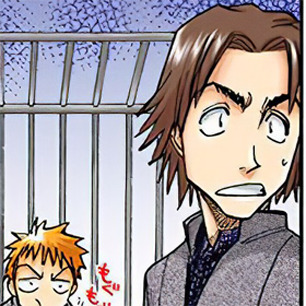

Asano Keigo[浅野 啓吾] reads "Superficial+Rustic/Unsophisiticated" and "Disclose+Me" basically just calling him surface level, simple, and open. He's exactly what it says on the label. Can be read like an open book. Then there's his sister...
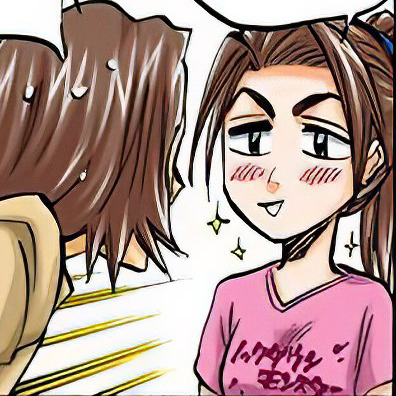
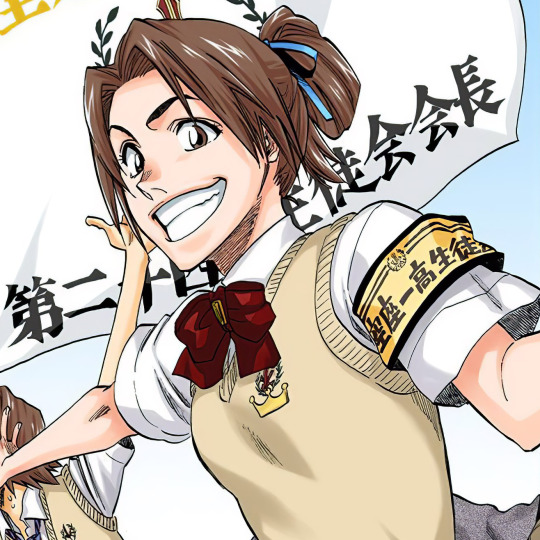
Asano Mizuho[浅野 みづ穂] and her name is the phonetic MIDZU+"the ear of a plant/head of a spear/tip of a brush." There are kanji that could go with that but for one, I'm not just gonna take blind stabs, and besides if Kubo had wanted to ascribe obvious meaning to it, he'd have done so. No idea what to make of that one. Considering she's extremely minor and secondary to an already minor character at that, I'm willing to bet he just picked it to be aesthetically pleasing.
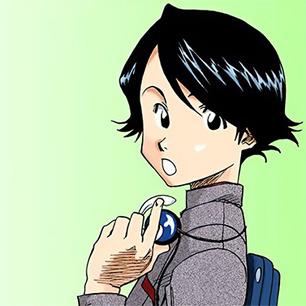
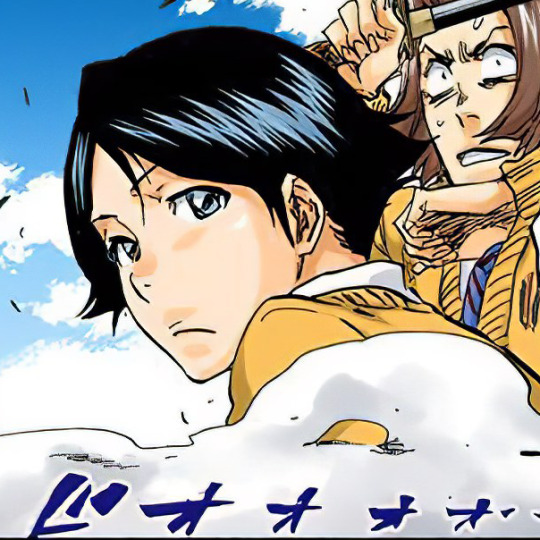
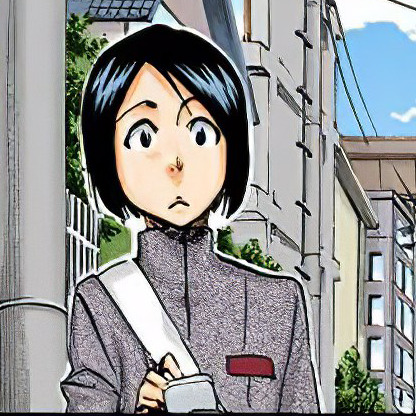
Kojima Mizuiro[小島 水色]: "Little+Island" "Water+Color," that is of course as in "Color (of) Water" and not to "water color paints," those have a different name entirely in Japanese. I don't know that his name really says much about him, but considering a lot of weird little details of his fairly minimal appearances across the series, I have my own crackpot theories about Mizuiro, but this isn't the time or place...
Honshou Chizuru[本匠 千鶴]: "Book+Artisan" and "1,000+Crane(s)" the association of paper craft and cranes points pretty obviously to origami, and 1,000 origami cranes (senbazura[千羽鶴]) which evokes a meaning of longevity and recovery from illness. Also the Bookishness vibe seems to be evoked in her general glasses girl design.

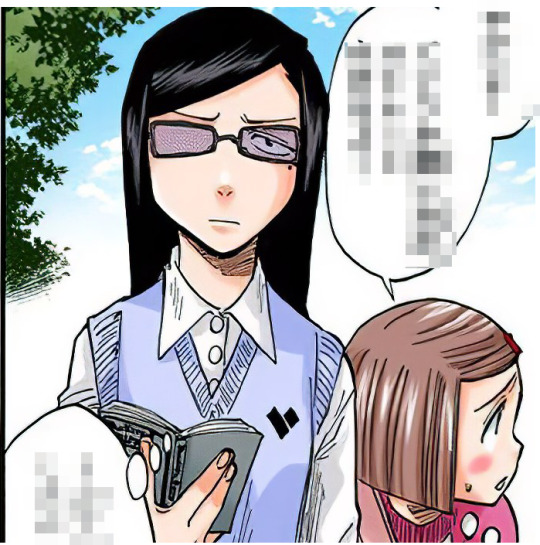
Kunieda Ryou[国枝 鈴]: "Country+Branch" and "(Small)Bell." "County" like a "nation/kingdom," not like "rural" as in Asano's name. The small bell evokes a clear but subtle ring, which is kind of reflected in her quiet and intelligent demeanor.
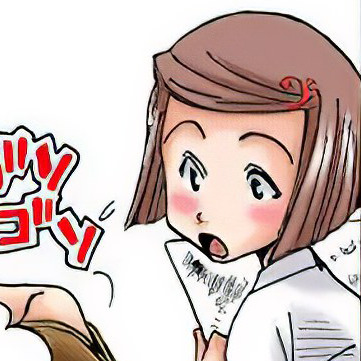
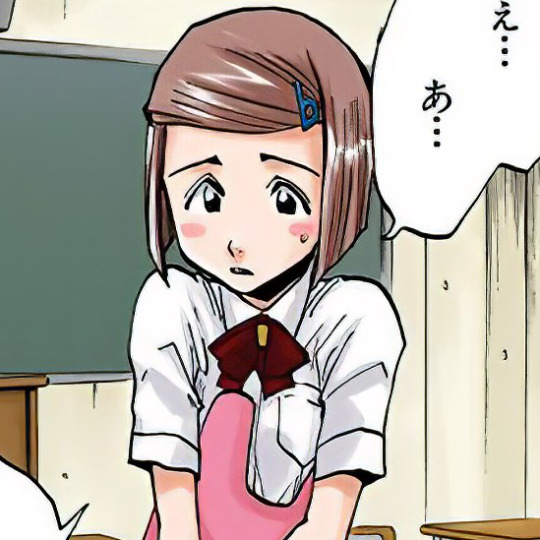

Ogawa Michiru[小川みちる] "MICHIRU" is phonetic so no attributed meaning, but her surname just means "brook/stream" (lit."Small+River") a very on the nose nod to her diminutive size. I never noticed until now but she always has different sheet music notation hairpins.


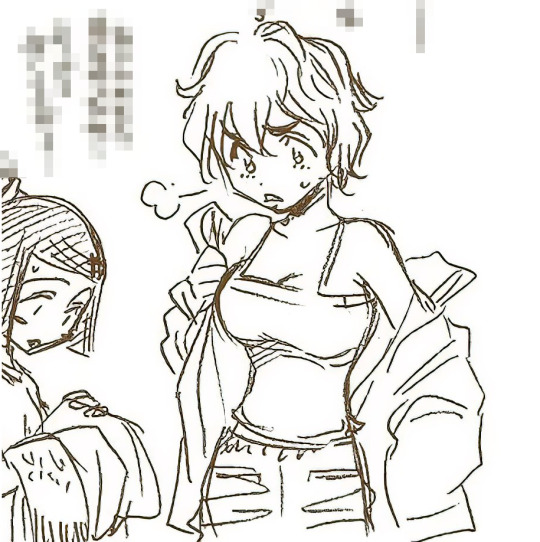
Natsui Mahana[夏井 真花]: "Summer+Well" (again, like with Inou, the structure you fish water out of, not the adverb) and "Pure/Genuine+Flower." She's an extremely minor character so I don't see there really being much overt meaning to this. Summer seems to evoke her tan*, and Flower beauty, and she's a busty tan girl. (*you know I said that on reflex, but now that i think about it, I don't know that Kubo himself ever actually drew her in color... that may have been an anime thing.)
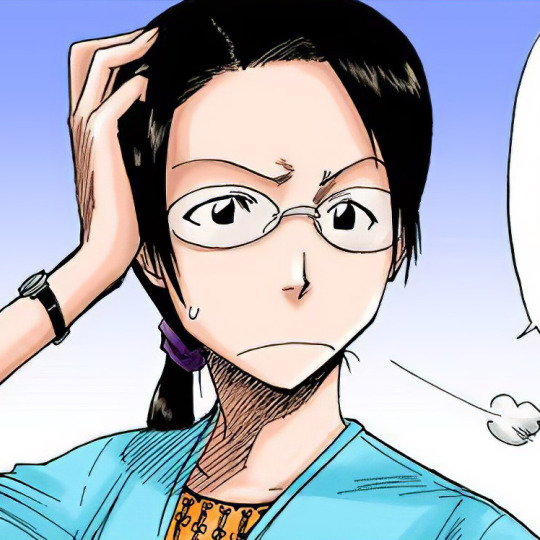

Ochi Misato[越智美諭]: "Surpass+Wisdom" and "Beauty+Admonish" which I guess I've never looked at before now. It's not that she isn't a cute character design(and I've got a thing for kind of homely teacher characters anyway...) but I didn't realize Kubo was trying for, like, a "hot teacher" thing with her?
And those are basically all the important ones, and frankly a couple not so important ones... I'm not getting into any of Kubo's little inbetween doodles, or god forbid that ridiculous number of random Karakura High students he dumped into Burn the Witch.
(sorry i got lazy and didn't finish digging up pics for everyone, but I at least made sure to have reference for the obscure characters that some people might not remember)
33 notes
·
View notes
Text
The Chanoyu Hyaku-shu [茶湯百首], Part III: Poem 75.

〽 Cha wo tate-ba chasen ni kokoro yoku tsukete chawan no soko [h]e tsuyoku-ataru na
[茶を立てば茶筌に心よく付けて 茶碗の底へ强く當るな].
“When preparing tea, the chasen [should be] handled with great care, so that it does not scrape forcefully against the bottom of the chawan.”

Kokoro-zukeru [心付ける] means to be aware of something, to take notice of something -- and so by extension, to be conscientious, to be careful (when doing something). The suffix -te [て] indicates continuity of the action named by the verb, in this case continuing to be aware of what one is doing. And finally, inserting yoku [よく = 良く] (which amplifies the sentiment conveyed by the expression) before tsukete, we get “be very careful,” “do (something) with great care.”
Tsuyoku-ataru [强く當る]: tsuyoku [强く] means strongly, forcibly, powerfully¹; and ataru [當る] means things like confront, meet, encounter, strike, touch, contact, and so forth. In this case, tsuyoku-ataru has been translated “scrape forcefully (against)” (it could also be translated with expressions like “rub forcefully,” or even “abrade forcefully,” in this example). The idea is that the host should be careful not to rub or grind the chasen against the bottom of the chawan forcefully, especially when blending the koicha (but also when performing the chasen-tōshi and whisking usucha).
The host should avoid doing so because:
1) the chasen (on account of the high silica content of bamboo²) can actually scratch the glaze on the bottom of the chawan, and may eventually abrade³ the glaze (the glaze of old chawan not infrequently will be seen to have lost its gloss on the bottom where the chasen touches it⁴); and,
2) rubbing the tines against the bottom (especially when using something like a black Raku-chawan that has a naturally rough glaze) can cause the tips of the tines to break off, contaminating the tea -- this is especially dangerous when blending koicha.
It was in recognition of both of these possibilities that these words of advice were written into a poem dedicated to the edification of the beginners.

This poem, probably on account of the basic teaching that it embodies (as well as the authority of its most likely source⁵), is always the same -- in those collections where it is found.
_________________________
¹Tsuyoku [强く] can also be used to translate ideas like “deeply” and “profoundly;” but these concepts are irrelevant to the meaning of this poem.
The kanji “强“ is written “強” in modern Japanese.
²Silica, or silicon dioxide (SiO₂), is one of the major components of sand. The crystalline form -- i.e., coarse or granitic sand -- is used as an abrasive. The presence of bio-silica is why the chasen (silica makes up 40% or more of bamboo-stem ash*) can damage the glaze on the chawan (since the silica in glazes is modified by the inclusion of other chemicals, reducing its hardness). ___________ *In the leaves, it can be up to 76%, depending on the assay method used. This is why crushed, dried bamboo leaves (and also things like the straw of glutenous rice, which is also especially high in bio-silica) are a component of many traditional pottery glazes used in East and Southeast Asia.
³Certain types of ceramics -- especially those made expressly for chanoyu such as the red-Raku bowls -- have extremely thin glazes*. As a result, it is not all that unusual to find the glaze literally abraded away around the rim of the cha-damari [茶溜り] of old aka-Raku chawan†. ___________ *The reason was to keep the bowl as light-weight as possible -- since the glaze is the thing that accounts for much of the weight of the finished bowl.

†The name cha-damari [茶溜り] refers to the (often depressed) center of the bottom of the bowl, onto which the matcha is scooped when being transferred from the chaire.
Because the glaze tends to flow when it is melted in the kiln, the already-thin glaze around the rim of the cha-damari is often especially delicate. Aggressive use of the chasen can quickly abrade the glaze in this area -- sometimes to the point where the clay body is exposed. (People purchasing antique red-Raku chawan online should always inspect the seller’s photographs carefully, to make sure this is not the case.)
The part of the bowl just below the rim, named yubi-zure [指摺れ] (“rubbed with the finger”) in the above illustration, is usually called the chakin-zure [茶巾摺れ] by the modern schools -- though, to be honest, the whole of the interior is supposed to be “rubbed by the chakin“ during the wiping process. Yubi-zure refers to rubbing the upper part of the interior with the thumb when cleaning the chawan after it has been used to serve koicha. Since the modern schools don’t do this, they had to come up with another name for that part of the chawan....
⁴This was the principal matter of concern when using chasen such as those preferred by Jōō and Rikyū, which have straight tines, with the extremity of each tine cut off squarely.

The above photo shows the kind of chasen used by Jōō and Rikyū.

It might be good to add that, since the early 20th century*, chasen with tines that are shaved to a thin tip that is then curled inward (as shown above) have become common†. This kind of shape helps protect against an overzealous use of the chasen by limiting the abrasive damage that it might cause (though the fact that the bamboo still contains silica means that it will eventually abrade the surface of the glaze, albeit over a considerable period of time), while also helping to prevent the ends of the tines from breaking off and getting into the tea‡. ___________ *As the ranks of tea practitioners began to be filled with young women, many of whom had no interest in chanoyu (and were only participating to please their parents, who were insisting on this nonsense because a high menjō could make them more marriageable), this kind of chasen made its appearance -- perhaps because certain people were taking out their frustrations by grinding the chasen against the bottom of the chawan.
†Though occasionally denigrated by certain modern schools -- principally because this kind of chasen goes against their traditionally-preferred models (none of which are Rikyū’s chasen) , rather than for reasons of functionality.
‡With repeated use, however, the ends of the tines will tend to uncoil, and the thinner bamboo will more easily break off -- often as larger pieces. However, we must remember that the chasen was only supposed to be used one time, and then discarded, so this is more a consequence of violating the rules (in the interests of economy), rather than something that is an inherent flaw unique to the design of this kind of chasen.
⁵This poem is found neither in Jōō’s Matsu-ya manuscript, nor in Rikyū’s version of the collection (preserved in block-printed form) dated 1580.
As its earliest known appearance is in the version of the Hundred Poems recorded by Hosokawa Sansai around the middle of the seventeenth century (which has come down to us in the Kyūshū manuscript), perhaps it was he who added it to the corpus -- perhaps after seeing the damage that was beginning to appear on antique chawan*, now that so many more people were practicing chanoyu after training under tea masters of increasingly questionable competence.
Since this series of poetic instructions has always been known as the Chanoyu hyaku shu [茶湯百首] (or, since Sansai’s day, the Rikyū hyaku shu [利休百首]), even though the oldest collections contain no more than 90 verses, perhaps Sansai took it upon himself to bring the number up to a full 100 -- both as a way to fulfill the promise of the name†, and address those issues that he observed arising among his contemporaries, but which were not discussed by Jōō or Rikyū in their collections of the poems‡. ___________ *Indeed, many of the chawan of the sorts that were popular during the early Edo period exhibit just this kind of damage to their bottoms.
†People were becoming increasingly sensitive to literality as the social situation under the Tokugawa bakufu solidified into everyday reality. So while calling something one-hundred (poems) had originally simply meant that the collection consisted of a large number, now the moniker was being eyed suspiciously, as if (since the verses had theretofore been produced from memory whenever a copy was required) some of the poems had been forgotten, and so lost. By increasing the number to a round 100, Sansai could safeguard his own reputation by cutting off doubters before they had anything that might incite their doubts.
‡Probably as a result of the difference between the way novices were being trained in the early-to-middle sixteenth century and his own day.
In Jōō’s and Rikyū’s period, a person who was interested in chanoyu would begin by applying to join one of the chanoyu groups that formed around the different popular teachers. His initiation would consist of participating, as a middling guest, in the monthly or bi-monthly gatherings staged by the senior members of the group for several years. When his competence as a guest was recognized by the others, the novice would be invited to begin studying the way to make tea, a process that was usually completed in a matter of months. After that he would first begin by assisting one of the senior members to host their chakai, before finally receiving the members at his own gatherings.
Beginning in the second or third decades of the Edo period, and following the deaths of Rikyū, Sōkyū, and Furuta Sōshitsu, the system that has remained largely unchanged until today appeared, where beginners commenced their tea training by learning the mechanics of temae, and only later began to participate in gatherings as guests (though sometimes even called on to officiate at chakai before ever having participated in one in the other capacity). As a result, the beginner was largely unprepared when he first began to serve bowls of tea to others, with the deficiencies becoming apparent to the aging masters like Sansai (people who had been initiated into chanoyu while the great masters of the sixteenth century were still alive). He may have taken this as his inspiration, as “the last living master who had received the tradition directly from Rikyū” (as he was known), to try to correct things by expanding the poems to include topics that now seemed of a more pressing nature.
==============================================
◎ If these translations are valuable to you, please consider donating to support this work. Donations from the readers are the only source of income for the translator.
To contribute, please use the following link:
https://PayPal.Me/chanoyutowa
1 note
·
View note
Text
Chengdu
Beijing | Beijing Food | Chengdu | Pandas | Jiuzhaigou | Leshan | Shanghai | Suzhou | Travel Tips
Chengdu sits in a valley basically surrounded by mountains and is quite fertile. It's known in China for its chill vibe and delicious food. Compared to Beijing and Shanghai, it's much less fancy and gives a better feel of the real China. For that and access to some top tourist sites, I highly recommend this as the first city to visit outside the two main metropolis.

On arrival we noticed all the green trees, as it's much warmer than Beijing, at 55. We stayed near the Wuhou Temple area, the temple celebrates heroes from the three kingdoms era in Chinese history. In particular Zhuge Liang 诸葛亮, famed strategist who served the King based in Chengdu, kind of the Einstein of China, who you'd compare someone to.

Next to the temple is the Jinli Ancient Street 锦里古街, a fun shopping and snacks area. We very much enjoyed walking around and getting free food samples. The mianmian bing or soft shaved ice here is amazing.


A foodie city, Chengdu is famous for spicy food and hotpot. We ate at Jimao Dian 鸡毛店 or chicken feather restaurant, so called because it's for affordable eats, but is now a pretty popular chain. The hot chicken, fish fillet are all delicious. And the sliced pork with garlic dish is amazing.

For hotpot we went to Ho Tang 吼堂 near the main shopping area Chunxi Road 春熙路, and wow, what an amazing experience! First you have to wait for a seating, rare in China. And we soon found out why. They have three kinds of beef on a "wheel", fish balls made with jasmine or dragon fruit, and hte most tender yak meat you can imagine. And there's a visit by a face-changing opera actor. :)



We enjoyed going to the 100-year old Heming Teahouse 鹤鸣茶社, where you could leisurely watch face-changing opera, eat weilu 围炉煮茶 or roasting chestnuts and yam around a hot pot of tea with coals, a newly introduced tea method that originated in Yunnan. People know how to enjoy life here!

Right in Chengdu, on the street of our hotel, we could see a lot of Tibetan influence. Apparently it's due to a government office just down the street for Tibetan affairs.
Chengdu is a top tourist destination, where you can visit the Panda Breeding and Research Center , or take a train to visit Jiuzhaigou for the scenery or Leshan for the giant budha carved into the mountain. That's exactly our itinerary.
0 notes
Text
今日もジムでワークアウト!

筋肉おつかれ!

#フィットネスジム#ワークアウト#トレーニング#マシントレーニング#ダイエット#筋トレ#筋肉#鍛える#三茶#三軒茶屋#ジム内撮影禁止#ジム#tipness#ティップネス#筋肉お疲れ#風呂#光明石温泉#筋スタグラム
0 notes
Text
【肌膚冬日的溫暖守護 🌬️❄️】
隨著冷空氣來襲,皮膚乾燥脫皮的煩惱是不是也跟著找上門了?💦 冬天的低溫加上暖氣環境,讓肌膚屏障更容易受損,急需深層修護!
✨ 醫天使 山芙蓉全方位修護面膜
你的冬季肌膚急救站 💕
修護肌膚屏障:深層滋養,告別乾燥不適。
舒緩敏感泛紅:給受刺激的肌膚最溫柔的呵護。
��濕鎖水加倍:注入水潤活力,全天候柔嫩。
📅 使用小Tips:
週末暖暖的晚上,敷上山芙蓉全方位修護面膜,再來一杯熱茶,放鬆一整天的疲憊,讓肌膚和心靈一起補充能量~💖
🌟 現在就寵愛自己,讓冬日不再乾燥煩惱!
【Line官方帳號】 https://line.me/R/ti/p/%40jgk0510z
【🔗官方連結】 https://www.dr-lei.com/
#醫天使 #全方位修護 #冬季保養 #深層修護 #溫暖肌膚
0 notes

